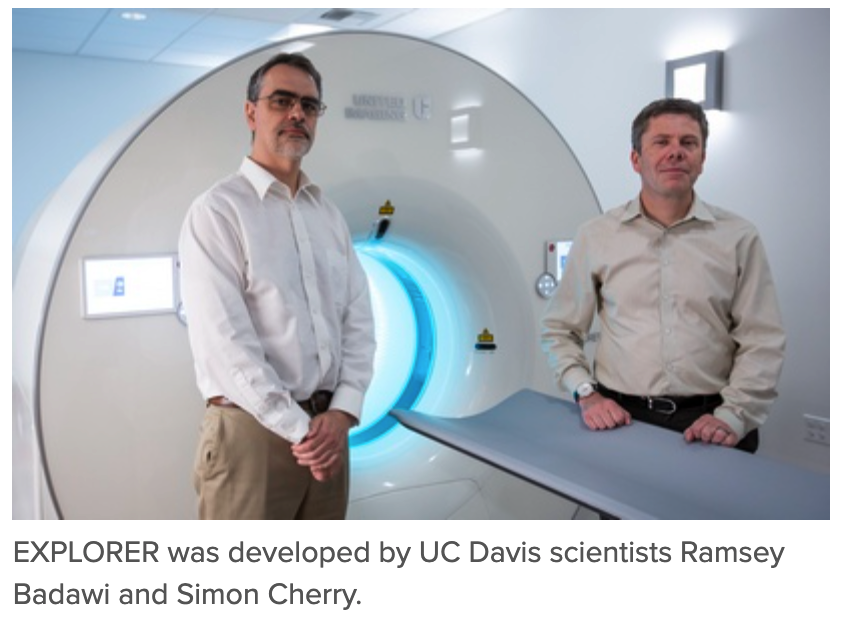UC-Davis-Built PET Scanner Can Visualize Blood Supply in Lung Cancer
Images

New advanced imaging technology at UC Davis Health may give doctors a way to quickly track how well their patients are doing with a certain treatment. Scientists at UC Davis Comprehensive Cancer and the UC Davis Department of Radiology have discovered a novel way to image the unique blood supply of the lungs. Their findings, published in the Journal of Nuclear Medicine, suggest it could help determine if lung cancer treatment is working.
The groundbreaking research uses EXPLORER, an innovative PET scanner invented at UC Davis and housed at the UC Davis Health Molecular Imaging Center in Sacramento. EXPLORER provides images of the body in minutes with higher quality and less radiation than traditional positron emission tomography (PET) scanners. They show for the first time how fast dynamic imaging using an advanced PET scanner, such as EXPLORER, can “see” into organs that have a dual blood supply. The lungs receive deoxygenated blood from the pulmonary arteries and oxygenated blood from the bronchial arteries.
Cancer frequently spreads to the lungs from other parts of the body because of this extensive blood supply.
“Our study found that the dual-blood supply effect is bigger in lung tumors than in normal lung tissue. This is why it can be used to spot lung cancer and has the potential to help us understand how it spreads,” said Guobao Wang, a professor with the Department of Radiology, who is leading the study.
Wang added that lung cancers often don’t do well with treatments such as immunotherapy. Analyzing lung tumors with a powerful PET imaging tool may lead to better therapy.
“In this new work, we are combining high frame-rate movies from EXPLORER with advanced math to develop a new PET imaging method. This makes it now possible to see and understand the dual-blood supply in normal lung tissue and lung tumors,” added Yiran Wang, a doctoral candidate in the Wang Lab and the first author of the research paper. He was jointly supervised by Simon Cherry, one of the co-inventors of the EXPLORER scanner.